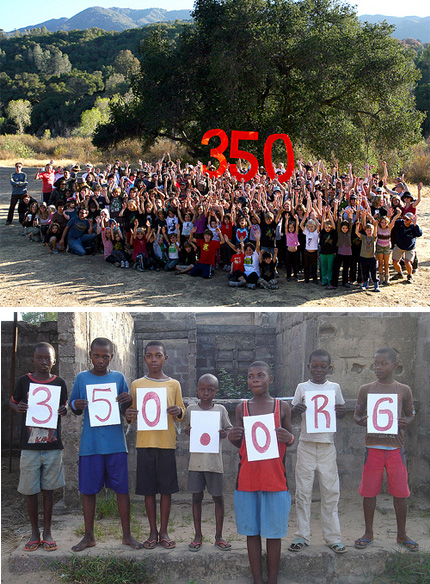ShareThis
Facebook Badge
Join My Mailing List!
Well said...
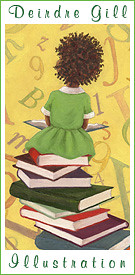
Monday, December 14, 2009
Give to be green
Rummage through that closet or toy bin with your child and pick out gently used items that you don't need anymore. Find places around town like the Salvation Army, Goodwill, and Habitat for Humanity that would benefit from your items or pass them on to neighbors in need. Holding a rummage sale is another option. Earning hard cash will help kids realize that their castaway toys and books still have real value.
Passing on unwanted items to those who can use them is crucial for keeping our lifestyles sustainable. Everything we buy is made from valuable materials from the earth. Harvesting these materials, manufacturing them into products and shipping them around the world take a tremendous toll on our planet both in terms of resources wasted and energy consumed. Giving those items a second chance at life will go a long way in protecting the planet and remembering what the holidays are really about.
check out my non-material gift guides for more great holiday ideas...
Thursday, December 10, 2009
Oh, Christmas Tree!

"Nothing says Christmas like a beautiful tree covered in chemicals, right? Wrong! Sadly, many trees, that timeless symbol of Christmas, are dangerous to your child’s health." read more
Wednesday, December 9, 2009
what if...

Saturday, December 5, 2009
Win a Signed Print!

I have a really exciting contest to announce! The author and illustrator of Redwoods, Jason Chin, has agreed to donate a signed print from his book and you could win it! Entering the contest is easy: just make a picture of something having to do with the environment and email it to me at deirdrekgill@yahoo.com. On January 1st I will choose a picture at random and send the winner the print. Here are the rules:
- Make a picture of something having to do with the environment (anything you want, really!)
- If you would like to also include a short explanation of what it is, please do.
- Any kind of art is acceptable, but no photographs.
- In your email DO NOT include your full name--FIRST NAME and LAST INITIAL ONLY!
- In your email DO include your address, so that I can mail you your print if you win.
- The random drawing will be conducted on January 1st and the print will be mailed out the next day.
- All artwork will be displayed on this website after the contest is over.
- You must be a kid or young adult to enter this contest...so please do not enter if you are over 18!
Friday, December 4, 2009
Homemade Holidays

I am blogging over at Audubon.com's great blog, The Perch, today. Hop on over and get inspired to be crafty and green for the holidays.
Wednesday, December 2, 2009
Ottawa's Greening With Green Bins

Monday, November 30, 2009
Is it green? Find out just how eco-friendly your favorite brands are

Ever wonder how eco-friendly your sneakers are? Or if GE is really as green as their ads will have you believe? Around the holidays we are faced with the tough dilemma of wanting to give great gifts and not wanting to cause harm to the planet with the products we buy. ClimateCounts.org is a great database where you can search common brands and companies and learn about their environmental impact. We have a lot of power as consumers to demand sustainably made products!
Saturday, November 21, 2009
NYC School Recycling Workshop
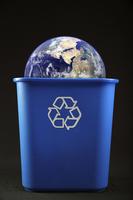
Thursday, November 19, 2009
Going Green Short Animations for Kids

Planet Green has a series of short animations with great messages about going green called My Place. They are silly, effective and fun to watch!
Thursday, November 12, 2009
Monday, November 9, 2009
Have an Eco-birthday

Wednesday, November 4, 2009
Going Green with Kids: Top Ten Green Activities and Projects

Tuesday, November 3, 2009
The First Garden
Friday, October 30, 2009
Recycling 101 and America Recycles Day

You can recycle up to 84% of your trash simply by taking it out of the garbage can and putting it in the recycling bin. Items made from recycled materials take far less energy and create only a fraction of the pollution to produce than items made from brand new materials. And of course, imagine the natural resources that are saved!
Here are some great ways to Reduce, Reuse and Recycle:
– Buy only what you need and use all of what you buy.– Avoid buying things that use excessive packaging and buy in bulk.
– Buy durable things that will last a long time
– When things break, see if they can be fixed before throwing them away.
– Wash and reuse plastic cups, utensils and bags.
– Precycle by buying products whose packaging can be recycled
– And always bring your own bag! If you are just buying a few things just carry them in your hands.
– Complete the cycle and buy products made from recycled materials. When you buy products made from post-consumer recycled materials you are helping to reduce carbon emissions and saving resources.
Did you know?
–If all the other people on the Earth used as much "stuff" as we do in the U.S., there would need to be three to five times more space just to hold and sustain everybody.– Americans throw away about 40 billion soft drink cans and bottles every year. Placed end to end, they would reach to the moon and back nearly 20 times. Recycling an aluminum soda can saves 96% of the energy used to make a can from ore, and produces 95% less air pollution and 97% less water pollution.
– Every pound of solid waste that goes into a landfill results in 2 lbs of greenhouse gases
– Americans throw away 2.5 million plastic bottles every hour.
– Every glass bottle recycled saves enough energy for a 100 watt light bulb to be lit for 4 hours.
– You’ll save two pounds of carbon for every 20 glass bottles that you recycle.
– Only about one-tenth of all solid garbage in the United States gets recycled.
– The average American creates 56 tons of trash every year.
Here’s Your Mission:
Set up a recycling system at home and at school.1) Ask your local municipality for recycling guidelines and bins.
2) Set up a place in your home for the recycling bins. The garage or big roll–out kitchen drawers are good places.
3) Make a label for each bin clearly listing what items belong in them.
4) Bring your recycling to the curb on recycling day.
Wednesday, October 28, 2009
Monday, October 26, 2009
181 countries...5200 actions...1 message

But it doesn't stop here...with the UN Climate Conference a little over a month away, we must continue to speak up and make sure our elected officials around the world hear us loud and clear. If you live in the U.S., search for their contact information here. If you live elsewhere in the world, search for their contact info online.
Friday, October 23, 2009
350.org Day of Action - Tomorrow!!!

Tomorrow's the big day. Hundreds of thousands of people from 179 countries (and counting!) around the world will stand together to demand action on climate change. Join one of thousands of actions...there's bound to be one near you! Let us know if you are taking part and where. If you would like to send me photos I will share them on the blog next week. I will be joining Greenpeace and marching across the Brooklyn Bridge. Hope to see a few of you there!
Tuesday, October 20, 2009
Rachel Carson - Brave Advocate for the Environment

“If I had influence with the good fairy who is supposed to preside over the christening of all children, I should ask that her gift to each child in the world be a sense of wonder so indestructible that it would last throughout life.” -Rachel Carson
Rachel Carson, (1907-1964) was a writer, a scientist, an ecologist and a brave advocate for the environment. As a young girl, Rachel’s mother nurtured her daughter’s love of nature. She studied the sea, plants and wildlife, and taught others about the living world around them through her books and articles. As a young woman, she became the Editor-in-Chief of all publications for the U.S. Fish and Wildlife Service, where she wrote pamphlets on natural resources and conservation. Carson strongly believed that people are integrally linked with nature, and must learn to care for it, rather than overpower it. One article she wrote, “Help Your Child to Wonder,” (1956) aimed to teach people about the wonder and beauty of the living world.
In 1962, Carson published the book SILENT SPRING, and with it the environmental movement was born. The book was written to raise awareness of the great harm that synthetic chemical pesticides had on the environment. It took great courage for Carson to speak out against the agriculture and chemical industries. But she firmly believed that we as human beings are just as vulnerable to the toxic pesticides we spray on our fields, homes and trees as the insects themselves are. In defending her book, Rachel Carson stated: “We still talk in terms of conquest. We still haven’t become mature enough to think of ourselves as only a tiny part of a vast and incredible universe. Man’s attitude toward nature is today critically important simply because we have now acquired a fateful power to alter and destroy nature.”
Monday, October 19, 2009
Speak Out Against Climate Change - Oct. 24th!!!
This Saturday, October 24th, tens of thousands of people from 162 countries around the world will make a their voices heard and demand a real commitment from leaders to tackle climate change. The grassroots organization 350.org is organizing this event, in hopes to familiarize the world and our leaders with the number 350. Scientists say that 350 parts per million CO2 in the atmosphere is the safe limit for humanity.
With less than two months until world leaders meet in Copenhagen at the UN to discuss a treaty on climate change, this international day of action comes at a critical time. Experts believe that the proposals on the table will not be enough to stop the worst affects of global warming.
Please join in the movement and add your voice to the millions of others around the world who demand real solutions!
Thursday, October 15, 2009
Kids Speak Out On Climate Change
Let world leaders know that you are ready at tcktcktck.org.
Today is Blog Action Day, over 9,000 bloggers around the world are blogging about global warming.
Wednesday, October 14, 2009
Big Ideas for a Small Planet
Did you know that there are dogs working to save wildlife? Watch the video to find out how, and visit Sundance Channel's The Green to see what other amazing things people, and animals, are doing to protect the planet.
Tuesday, October 13, 2009
Nature Detective

Hey Kids!
Did you know that we share our homes and yards with many creatures…other than your little brother? From tiny spiders to foxes, creatures live all around us, even if we can’t always see them. Sometimes we just have to use our sleuthing skills to find the evidence.
Can you spy any of these signs of wildlife?
-A nest
-A feather
-A spiderweb
-A nibbled leaf
-A shed exoskeleton
-Animal tracks in the snow, dirt or sand
-A burrow entrance
And now, try to spy the things a creatures needs to survive:
-Nuts, seeds and berries
-Pollen for bees
-Tall grasses, brush and trees to hide and nest in
-A source of water
With the evidence you find, can you make up a story about one specific creature’s day?
This post originally appeared on the Little Green Blog.
10 little things...
 The Audubon Society has composed a great list called "10 Things You Might Not Know About The Food You Eat." To see more 10 Things lists, visit Audubon.org.
The Audubon Society has composed a great list called "10 Things You Might Not Know About The Food You Eat." To see more 10 Things lists, visit Audubon.org.- The average fruit or vegetable we eat has traveled 1,500 miles to reach the table.
- About 40% of our fruit is imported from outside the United States.
- The vast majority - around 80 percent - of the energy used by the food industry goes toprocessing, packaging, transporting, storing, and preparing food.
- Domestic food transport creates 120 million tonsof CO2 emissions annually.
- Fresh peas can be produced with only 40% of the energy required for frozen peas.
- Children who eat conventional diets are shown to have six times the amount of pesticides in their bodies as children who eat organic diets.
- The world's fish species, more than 70% of which are overfished, could be replenished throughsustainable seafood management.
- Many farms offer weekly or monthly subscription baskets of fresh produce, flowers, fruits, eggs, meat, milk and other locally-grown and organic products.
- New York City's venerable Greenmarket helps preserve over 30,000 acres of working farmland.
- Organic crops contain significantly higher levels of vitamin C, iron, magnesium and phosphorous than conventional fruits and vegetables.
Friday, October 9, 2009
Here Comes Science! An interview with John Flansburgh of They Might Be Giants
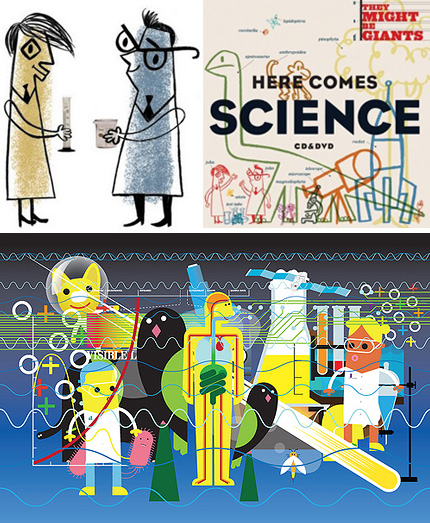
It isn't often that kids and adults can agree on music. Your parent's might have been thinking less about making you happy and more about their own sanity when they bought you your very own ipod. But alas, there is hope! Parents, kids and especially teachers will all agree that They Might Be Giants' new cd/dvd Here Comes Science is totally awesome. You won't be able to resist tapping your feet and singing along to songs like "Photosynthesis" and "Roy G. Biv". And the great animations make it impossible to ignore all the fascinating facts about science coming your way. Eco-minded kids and parents will especially like the song "Electric Car". See video below (...isn't it amazing how many animals you can fit into one electric car?!?)
John Flansburgh of They Might Be Giants was nice enough to answer some questions about their new release.
Green Guide for Kids: Did you like science when you were a kid?
John Flansburgh: Neither John nor I were good students, but we were curious about the world. Books like "How Things Work" and pop science television shows were fascinating to me as a kid, just as Mythbusters is to me now actually!--just understanding the real systems and phenomenon within nature and technology.
GGFK: In the DVD, you make being a Paleontologist seem so cool. If you weren't a musician, would you like to be a scientist?
JF: Even if I wasn't a musician I don't know if any of us have the patience or focus to be scientists! Danny put that song together, and his kids are pretty dinocentric and I think the song came out of that interest. The video for the song has gotten a little bit of criticism from actual paleontologist because it shows Danny working in what looks like an archeological site, where most paleontologists evidently do their research indoors.

GGFK: When I was listening to Here Comes Science, I learned so many amazing facts. For example, one million Earths could fit inside the sun. What's the most amazing thing you learned while making this CD?
JF: That living things are mostly made up of just four elements!
GGFK: My favorite song on the CD is Electric Car. Do you drive an electric car?
JF: My most recent car purchase was an impossibly old Ford pick up truck for hauling logs around in the Catskill Mountains. but maybe that counts just on the recycling side of things! I don't think there are any fully electric cars on the market, although every day there is another tantalizing miniature electric car prototype in the news. It would be very exciting to see them take over New York City. A couple of friends of mine have hybrids and I have to say driving in near silence is pretty cool. It just seems so much smarter in the engineering than gas cars. But while the song is kind of an idealized dream of a world of electric cars, I feel a little nervous that it's message might inadvertently end up feeding shortsightedness on our national--or really worldwide--environmental challenges. It's simply not a given that electric cars for the moment won't just shift much of the problem from one behavior to another. How we're going to fuel any vehicles of the future is a huge unanswered problem, and as a culture we urgently need to focus developing alternative energy sources. Personally I think it's important that people know there is no such thing as clean coal no matter what the ads on tv say. Okay. I'll step down from my soap box now.
GGFK: What are some things They Might Be Giants do to protect the environment?
JF: As I am on the road touring with the band is a harsh reminder that as a business we are so far away from being eco-role models. I've been able to make more progress when I'm back in New York. My wife and I actually can often eat entirely locally grown food as much when we're in the country, which isn't hard since there is so much local farming. I feel I'm just waking up to how to actually reduce my consumption in small doable ways, but it is a constant issue. Our friends got my wife and I into composting which is much less gross than I thought, and a great way to avoid creating landfill. I've completely flipped over to green cleaning products which is honestly ridiculously expensive, but I can't see ever going back. They smell way to good.
Thursday, October 8, 2009
Best Friends for Life
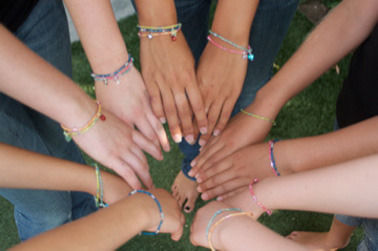 If you are trying to live a green lifestyle, it's hard to not feel guilty at times when shopping. We are constantly faced with tough questions, like "what was this made from?" "where was this made?" "who made this, and were they given a fair wage?" That is why you hear the term environmentally sustainable attached to many products these days. Environmentally sustainable means that a product or process meets the needs of the present without compromising the ability of future generations to meet their needs.
If you are trying to live a green lifestyle, it's hard to not feel guilty at times when shopping. We are constantly faced with tough questions, like "what was this made from?" "where was this made?" "who made this, and were they given a fair wage?" That is why you hear the term environmentally sustainable attached to many products these days. Environmentally sustainable means that a product or process meets the needs of the present without compromising the ability of future generations to meet their needs. Tuesday, October 6, 2009
Hey Teachers!

Tuesday, September 22, 2009
Tck Tck Tck

The clock is counting down to December 7, 2009, when leaders from all over the world will meet in Copenhagen, Denmark for the United Nations Climate Change Conference. You may be thinking, "what's the big deal about this particular conference?" Well according to scientists, the time to act to stop global warming is now. We need to not only slow the increase in greenhouse gases in our atmosphere, but actually being to decrease them by 2015. That's only 6 short years away! Every year since the industrial revolution, our input of greenhouse gases into the atmosphere has increased at a steady rate. If we do not begin to reverse this trend by 2015, the catastrophic course of climate change will already be set in motion.
As of right now, most of our elected leaders are not getting the message that global warming needs their serious attention, and fast. That why we need you! You may not be an elected leader, or even old enough to vote, but you can be a leader on this! Here's what you do:
1) Speak up! Tell your friends, family, school or church community that why this is important to you, and that our future is at stake.
2) Be bold! Call, write or email the elected leaders of your country or state. To search for your country's leader's phone number click here.
3) Call or write to your members of congress. Tell them you want them to take bold action on climate change. Search here for their phone number and address.
4) Visit tcktcktck.org to learn more about the Climate Conference in Copenhagen, and New York City Climate Week, which is a series of events and actions to get the attention of the leaders at the United Nations in town to discuss climate change this week.
5) Sign up to attend or host an event for 350.org's Day of Action on October 24th. More on this event to come!
Thursday, September 3, 2009
GreenOpolis
 Girl Scout Troop 151 of Las Vegas is kicking off their year long greener living initiative with a “green living fair” called GreenOpolis. The fair is open to the public on September 12th from 10am-1:30pm. Registration is required before the event. If you are in the area, I hope you and your family can stop by!
Girl Scout Troop 151 of Las Vegas is kicking off their year long greener living initiative with a “green living fair” called GreenOpolis. The fair is open to the public on September 12th from 10am-1:30pm. Registration is required before the event. If you are in the area, I hope you and your family can stop by!Tuesday, September 1, 2009
Into the woods

As summer draws to a close, both parents and kids alike mourn the end of long days full of play and free of schedules. This shift from carefree summer days to school days has become even more distressing, as research shows that kids spend more time inside now than ever before. This detachment from the outdoors is causing what Richard Louv coined in his book, Last Child in the Woods, as "nature deficit disorder," resulting in a wide range of behavioral problems such as anxiety, attention deficit disorders and depression. Childhood obesity is also shockingly on the rise, and is in no doubt a direct correlation.
So what is causing this great indoor migration? For one, parent's growing fear of "stranger danger", fueled by the media, keeps kids under constant supervision, not allowing for the spontaneous, unstructured play outdoors that experts say is so vital to childhood development. Secondly, the increased lure of gadgets, computers and television is often too enticing for kids to resist. And finally, a loss of natural surroundings in our neighborhoods and cities has forced many children indoors.
With some guidance and encouragement, your kids can find their way back to nature. There are several great resources for kids on the web on where to go, what to do and what to see in outdoors.
The US Forest Service has created a website that encourages kids to "discover themselves" in nature. Kids visiting the site can search for places to bike, swim, fish, hike and go camping in their area. They can also discover some cool tricks to use in the great outdoors, like how to use a compass or track animals. Visit discovertheforest.org
The National Wildlife Federation has a great site for families that encourages children to spend one Green Hour outside a day. That's not asking much, considering the average American child spends 44 hours a week with electronic media. The site provides great tips and activities to do with kids during their "green hour." Visit greenhour.org
Discover the Forest
Wednesday, August 26, 2009
Green your seafood
 We often think of fish as being a healthy choice, but quite a lot of seafood is neither good for you, nor good for the environment. Fish can contain chemicals such as Mercury and PCB's (ick!) which are very toxic for your health. And while eating some fish can be a healthy part of your diet, one should consider the environmental impact. Seafood is often overfished, causing extensive habitat damage that can negatively effect the entire food chain. Some fish come from farms with widespread pollution and disease. Luckily scientists have done the research for us and can guide us in our seafood choices. Check out the Environmental Defense Fund's Seafood Selector to learn what are your best, o.k. and worst choices next time you are at the fish counter.
We often think of fish as being a healthy choice, but quite a lot of seafood is neither good for you, nor good for the environment. Fish can contain chemicals such as Mercury and PCB's (ick!) which are very toxic for your health. And while eating some fish can be a healthy part of your diet, one should consider the environmental impact. Seafood is often overfished, causing extensive habitat damage that can negatively effect the entire food chain. Some fish come from farms with widespread pollution and disease. Luckily scientists have done the research for us and can guide us in our seafood choices. Check out the Environmental Defense Fund's Seafood Selector to learn what are your best, o.k. and worst choices next time you are at the fish counter.Friday, August 21, 2009
Spread the word...with pictures
 I am always trying to figure out the best way to get out the message about the consequences of global warming. As an artist, sometimes I find that images speak much louder than words. How do you spread the message, especially to people don't seem to care? Do you make pictures, or write poems? Share them with your fellow Green Guide for Kids readers!
I am always trying to figure out the best way to get out the message about the consequences of global warming. As an artist, sometimes I find that images speak much louder than words. How do you spread the message, especially to people don't seem to care? Do you make pictures, or write poems? Share them with your fellow Green Guide for Kids readers!
Tuesday, August 18, 2009
Wednesday, August 12, 2009
Take the waste free lunch challenge
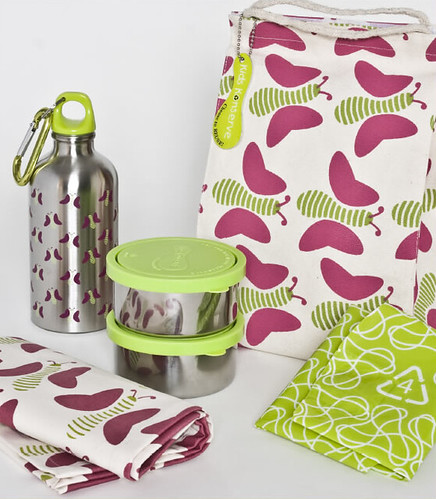
Kids Konserve is challenging schools and kids to go waste-free this upcoming school year. To help you achieve that goal they are offering Green Guide for Kids readers 15% off their products. They have many neat ways to keep your lunch cool, clean and waste-free, such as an insulated lunch made from 100% recycled water bottles, a nesting trio of stainless steel containers, and a no-sweat ice pack that fits perfectly in the bags.
To get 15% off enter the coupon code: greenguide. Valid until 9/30/09.
Monday, August 10, 2009
A new book about being a vegetarian

Tuesday, July 7, 2009
John Muir - A Green Pioneer

“Everybody needs beauty as well as bread, places to play in and pray in, where nature may heal and give strength to body and soul.” –John Muir
John Muir (1838-1914), known as “the father of our national parks”, was America’s most famed naturalist and conservationist. As an explorer, he embarked on exciting wilderness adventures from Indiana all the way to Florida, among Alaska’s glaciers and throughout California’s Sierra Nevada. During his journeys he kept nature journals in which he wrote about the beauty he saw in nature. He drew detailed sketches of plants, animals, mountains and landscapes. He used these journals to compose letters, essays, articles and books that taught people, then and now, the importance of experiencing and protecting nature. His writing and activism inspired President Theodore Roosevelt’s bold conservation programs and lead to the creation of Yosemite, Sequoia, Mount Rainier, Petrified Forest and the Grand Canyon National Parks. In 1892, John Muir formed the Sierra Club and was the club’s very first president. The Sierra Club continues John Muir’s work today, teaching people about conserving our natural heritage and establishing new National Parks and a National Wilderness Preservation System.
Wednesday, June 10, 2009
Summer's almost here!

For many families, piling suitcases, kids and even cats and dogs into the car for your summer vacation is a yearly tradition. You and your family can green your car trip and get the summer off to a cool start by trying these simple steps:
1) Don’t idle. Have you ever walked behind a car in a parking lot that was sitting with it’s engine going? Cough! Cough! Idling causes unnecessary pollution. It’s a good rule of thumb to turn off your engine when parked for more than 30 seconds. The best way to “warm up” your car is to drive the vehicle and it will be “warmed up” in 30 seconds.
2) Lighten up! Get that junk out of your trunk. Driving around with unnecessary weight makes your car less fuel efficient.
3) Be a smooth operator. Avoid jerky starts and stops and use cruise control to maintain a steady speed. And slow down! Your car uses less fuel when driven close to the speed limit.
4) Keep it in tune. Get regular tune ups and make sure your car’s tires are properly inflated to boost it’s MPG.
5) Check your cap. Many cars have missing or broken gas caps which cause gas to leak and harm the environment.
6) Don’t be a drag. Remove bicycle and ski racks when not in use, and keep those windows closed when driving on the highway to reduce drag and improve your fuel economy.
7) Make a plan, Stan. Plan your route to avoid sitting in heavy traffic.
Wednesday, May 27, 2009
White is the new green
 Photo Courtesy of the Pennsylvania State Archives
Photo Courtesy of the Pennsylvania State ArchivesHave you ever touched a black car that's been parked in the sun? Hot tamale! Dark colors like black absorb heat while light colors like white reflect heat. That's one reason why apartment buildings with black tar roofs heat up like an oven in the summer. That's also why you can cook an egg on pavement on a scorching hot day. As people replace heat reflecting and carbon storing forests, streams, and valleys with heat absorbing and carbon producing cities, roads, and strip malls, the Earth gets warmer and warmer. One way to help counter the problem is to paint flat black rooftops white, which is exactly what President Obama is encouraging us all to do. White roofs are a double benefit. They reflect heat away from the surface of the planet and help keep buildings cool and therefore reduce energy use from air conditioning.
Wednesday, May 13, 2009
I uses to wear WHAT???

Sunday, April 26, 2009
Meet Tim Magner, Part 2
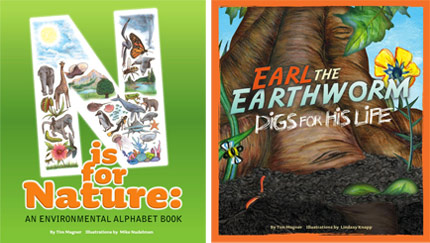
Tuesday, April 21, 2009
Happy Earth Day!

Join in on the fun and renew your commitment to help protect our planet at an Earth Day event in your community. Visit The Earth Day Network to search for events taking place in your area.
If you'd rather stay close to home, why not pick out a green activity or find a new way to get involved? (And get your family and friends involved, too!)
Let us know what you are doing for Earth Day!
Sunday, April 19, 2009
Meet Tim Magner, Author of AN ENVIRONMENTAL GUIDE FROM A TO Z

Just in time for Earth Day, we have a special interview with Tim Magner, the author and publisher at Green Sugar Press, whose books encourage kids to explore, examine and investigate the natural world around them. His book AN ENVIRONMENTAL GUIDE FROM A TO Z, provides 26 opportunities for kids to learn about the Earth they live on. From the Amazing Amazon to the Zoo, every letter explores a topic, idea or solution to better help kids comprehend and care for for the environment. Let's ask him a few questions!
What inspired you to write AN ENVIRONMENTAL GUIDE FROM A TO Z?
Patrick, one of my seventeen nephews, and now in 3rd grade, kept telling me about what he was learning in school—from the destruction of the rainforest to the struggling polar bears. He was sad. I chose to write a book about the wonders of the natural world and to encourage kids to get out and learn more about it by enjoying it.
What is you favorite letter in the book and why?
Can I have two? "L is for Lugari" is fun because I spent a couple weeks in Colombia visiting with Paolo Lugari and Gaviotas. Seeing firsthand how Lugari turned a wasteland into a new forest was over-the-top cool. I also love the "C is for Cycle" page, probably because I like conversations about how nature has no garbage dumps. When I visit classrooms I usually bring my worms and explain how they eat my left-overs and turn it into a valuable fertilizer for my plants.
Your book explores many different regions and people in the world. Why should a kid living in a city care about Mt. Kilimanjaro or the Inuit Eskimos?
Funny you should ask. Actually, I believe it's far more important they first know their backyards or nearby park than Africa or the Arctic. Learning about nature starts with the nearby and expands, so we included ideas to get out and learn more about what's around them, i.e. "Have you considered keeping a journal of your local habitat—to write about what you see, smell and hear?"
What is the single most important idea about the environment that you wish all kids knew?
Again, just one?
I want kids to know that exploring outside is loads of fun and, chances are their parents and grandparents got to have more fun than they did because they got to play outside often.
As John Burroughs said, "Knowledge without love will not stick, but begin with love and knowledge is sure to follow." So, once kids fall in love with the earth, they'll learn that we need nature for everything in life. Better yet, nature teaches us everything we need to know—from energy flows and nutrient cycles— to create a better future.
This is the most exciting time in the history of the world to be alive.
Monday, March 30, 2009
The Votes Are In!

Earth Hour was a success! Lights went out in 4,085 cities in 88 countries in what is being described as the largest demonstration of public concern about climate change in history.
Take a look at these amazing before and after pictures of landmarks around the world plunging into darkness for one hour.
Tuesday, March 24, 2009
Too Young to Vote?
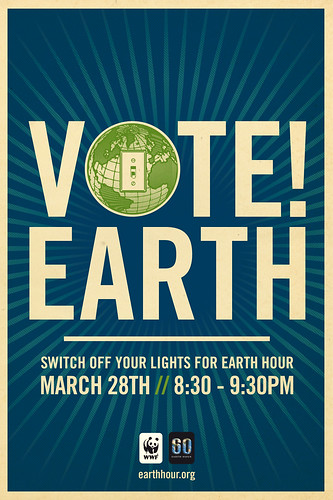
You might have been too young to vote in the recent presidential election, but don't let that stop you from voting with your light switch for Earth Hour 2009. On Saturday, March 28 at 8:30 PM, as many as 1 billion people around the world will turn off their lights in a universal vote to stop global warming. The World Wildlife Fund will present these votes at the Global Climate Change Conference in Copenhagen this year. At this important meeting, governments from all over the world will gather to decide how to fight global warming.
Earth Hour began in Sydney, Australia in 2007. 2.2 million home and businesses switched off their lights for one hour. The following year, Earth Hour went global, with 50 million people world wide sending a powerful message against global warming. Important landmarks such as the Golden Gate Bridge in San Francisco, the Sydney Opera House, Rome's Colosseum, and the Coca Cola billboard in Times Square all went black.
This year, you can VOTE EARTH just by switching off your lights. Visit Earthour.org to sign up so that they can count your vote.
Friday, March 20, 2009
Meet Jason Chin, REDWOODS author and illustrator, part 3
Green Guide for Kids: Why do Redwood trees grow only in the Northwest of the U.S.?
Jason Chin: Redwoods can actually grow in many places, but the tallest and oldest trees grow in the northwest United States, because the climate there is best for them. To grow tall redwoods need a lot of water, and that area of the country gets a lot of rain--in fact the coast redwood forests are rain forests.
GGFK: Are the redwoods endangered?
JC: Redwood forests aren't on the US government's endangered species list, but there are far fewer redwoods in the United States than there were a century ago. The main threat is logging. There used to be about 2 million acres of coast redwood forest in the US, but 95% of that has been cut down. Today, less than 106,000 acres of the original forest remain. Some of that original forest has been replaced a second generation of trees. An important distinction must be made between old-growth and second generation forests. Old-growth forests are the ones that we normally think of when we think of redwoods -- they are home to the tallest, most impressive redwoods. It will take thousands of years before the second generation forests that began this century to reach their height.
GGFK: Are their any species that live only in the Redwood forests?
JC: There are a number of species that live only in old-growth forests. The spotted owl and marbled murrelet only nest in old-growth trees (both old-growth redwoods and douglas firs). These two species are endangered, since there are so few old-growth forests left and it take so long for new forests to grow back.
GGFK: What can we do to protect them and where can we learn more?
JC: There are many organizations dedicated to the preservations of old-growth redwood forests. One of the oldest and most respected is Save the Redwoods League, founded in 1918. Their website has a wealth of resources for kids and adults about redwoods including educational resources.
Tuesday, March 17, 2009
Meet Jason Chin, REDWOODS Author and Illustrator: Part 2

The Green Guide for Kids: Your book Redwoods comes out today, congratulations!
Jason Chin: Thank you very much, and thank you again for the interview.
GGFK: What are some interesting facts about redwoods that you think kids would be surprised to hear?
JC: Well, the obvious fact is that they are the tallest trees in the world and most people know this already. But with a little context this fact becomes much more interesting: They aren't just the tallest trees, they are the tallest living things on the planet! And the tallest of them all, the tallest living thing on earth, is named Hyperion at 379.1 feet tall. How tall is that? That's 74 feet taller than the Statue of Liberty!
GGFK: In your book, you talk a lot about the redwood canopy, something that not many people know about. Can you talk a little about the canopy here?
JC: Of course. In fact, this was my favorite part of the research. The redwood canopy is a remarkable place. Redwood crowns are very big and very dense, so much so, that from the middle of them you cannot see the sky or the ground. And inside them, researchers have found a wide variety of other plants growing hundreds of feet above the earth. These including ferns, bushes and even other trees. In one instance, researchers found a new redwood taking root on the top of a fully grown redwood!
GGFK: In the book you talk about how important redwoods are to their ecosystem. Can you talk about some other species that depend on redwoods?
JC: A very good example of their connection to other species is the fact that they make their own rain. The summers on the northern California coast have very little rain, but a lot of fog. The fog condenses on the redwoods' needles and then drips to the ground. In this way it waters itself and all of the plants around it! Many of the plants on the forest floor depend on this artificial rainfall for their survival.
Friday, March 13, 2009
Meet Jason Chin, REDWOODS author and illustrator

Today we get to hear from Jason Chin, author and illustrator of the new book Redwoods (Roaring Brook Press, 2009). Redwood trees are one of our most precious natural wonders. They are the tallest trees in the world and some of the oldest (the oldest redwoods are 2,000 years old!). After reading this book, not only did I learn a lot about the trees themselves, but the beautiful illustrations gave me a wonderful sense of what it's like to be in the redwood forest! All week long Jason will be sharing his experience writing and illustrating his book, along with some great information about redwood trees.
The Green Guide for Kids: What inspired you to write a book for children about redwoods?
Jason Chin: I was reading an article by Richard Preston (author of The Wild Trees) in the magazine, The New Yorker. His description of climbing the trees was so exciting that I started imagining doing it myself. A few months later I imagined a child climbing them, and that's how Redwoods was born.
GGFK: This is a non-fiction book, but the pictures tell an imagined story. Why did you choose to illustrate the facts this way?
JC: I was excited to learn about the trees and I wanted children to get excited about them too. So in the story, I have the boy read a book about redwoods and suddenly find himself in the forest, experiencing it first hand. I hope that this helps my readers connect to the trees because they'll have a sense of what it is like to really be in the redwood forest.
GGFK: In this book a city kid visits the redwood forest. Do you think that city kids need more exposure to the natural world?
JC: I purposefully chose a city kid as my main character. I grew up in rural New Hampshire, where I got a lot of exposure to nature. Now I live in New York City and I see kids every day that don't get to experience nature very often. I want my book to give those children have an appreciation for the natural world that exists beyond the city limits. It's funny, in my book a boy is transported from the city to the forest, but the purpose of the book is to bring the forest to children in my city!
GGFK: In your book, the boy gets to climb to the top of a redwood. As a boy did you like to climb trees?
JC: I did climb trees. There was a good size pine tree in my back yard that I used to climb often and get pine pitch all over myself. I highly recommend it!
GGFK: Thank you. We look forward to speaking with you again tomorrow and can't wait to see your book on store shelves!
JC: Thank you!
Wednesday, March 11, 2009
a tiny ripple of hope...
Friday, February 27, 2009
Air Freshener
Most of our home's and businesses run on electricity created by burning coal. And while this fossil fuel keeps our country powered, it comes at heavy price. As of 2006, almost %40 of all manmade global warming carbon pollution came from electricity. The people who produce coal claim that they have created a new way of burning coal that is "clean." This funny video made by the Coen brothers challenges that claim. What do you think?
Monday, February 23, 2009
From Florida to China...Lilly Tougas goes green

How old were you when you learned about what it means to "go green?"
When I was 3 at my Montessori school, I would sing a song "the Earth is our Mother, we must take care of her" and I took it very seriously. When I was 6, my Mom and I read a book called "Hold Your Water" by Wyland and Steve Creech. At the end, I took a pledge, like a check off list of things and learned a lot about what to do.
Search This Blog
- About (5)
- activities (33)
- art (2)
- backyard habitat (10)
- carbon emissions (21)
- classroom projects (12)
- CO2 (6)
- compost (9)
- conservation (10)
- conserving water (4)
- crafts (11)
- energy (7)
- Games (8)
- gardens (7)
- get involved (40)
- global warming (33)
- green bodies (8)
- green gift guide (12)
- green home (18)
- green kids (25)
- green planet (10)
- habitats (11)
- Introduction (1)
- kids and the environment (22)
- planting trees (3)
- play (4)
- recycling (12)
- solutions (37)
- sustainable products (7)
- teaching green (48)
- technology (2)
- toxic chemicals (1)
- transportation (1)
- what? (6)
- wildlife (17)
-
▼
2009
(54)
-
►
October
(13)
- Recycling 101 and America Recycles Day
- Become a fan!
- 181 countries...5200 actions...1 message
- 350.org Day of Action - Tomorrow!!!
- Rachel Carson - Brave Advocate for the Environment
- Speak Out Against Climate Change - Oct. 24th!!!
- Kids Speak Out On Climate Change
- Big Ideas for a Small Planet
- Nature Detective
- 10 little things...
- Here Comes Science! An interview with John Flansbu...
- Best Friends for Life
- Hey Teachers!
-
►
October
(13)
Links for Kids
Links for Parents
- alliesanswers.com
- bestgreenblogs.com
- blog.greenzer.com
- eartheasy.com
- ecofriend.org
- environmentaldefense.org
- globalwarmingkids.net
- Green Providers Directory
- greenbrooklyn.com
- greenmoms.ivillage.com
- greenstylemom.blogspot.com
- Little Green Blog
- petiteplanet.blogspot.com
- thegreenguide.com
- thegreenists.com
- treehugger.com
- Women's Voices for the Earth
- www.eartheasy.com
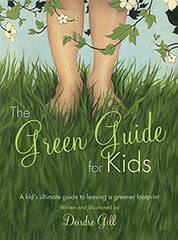 The Manuscript
The Manuscript








